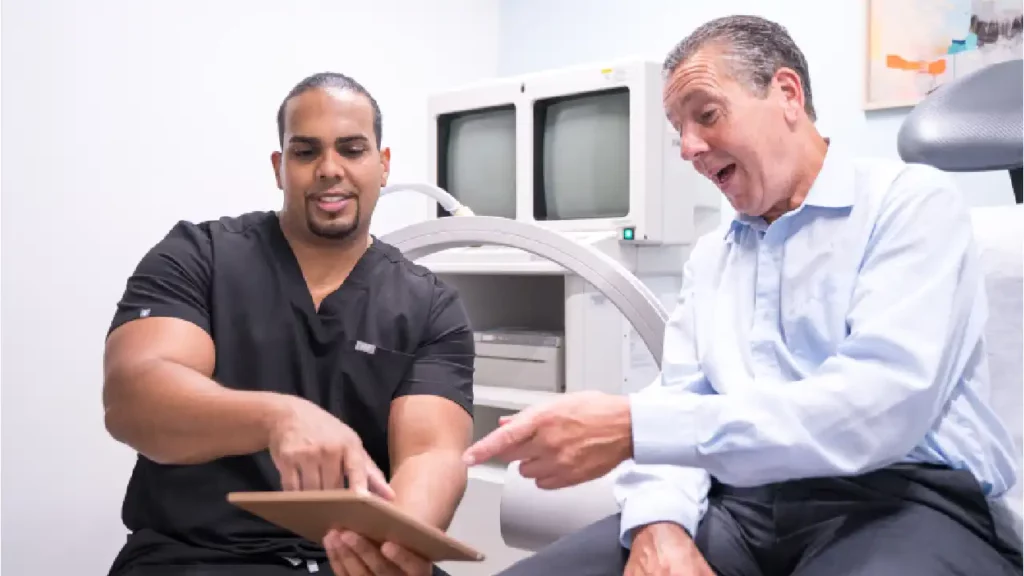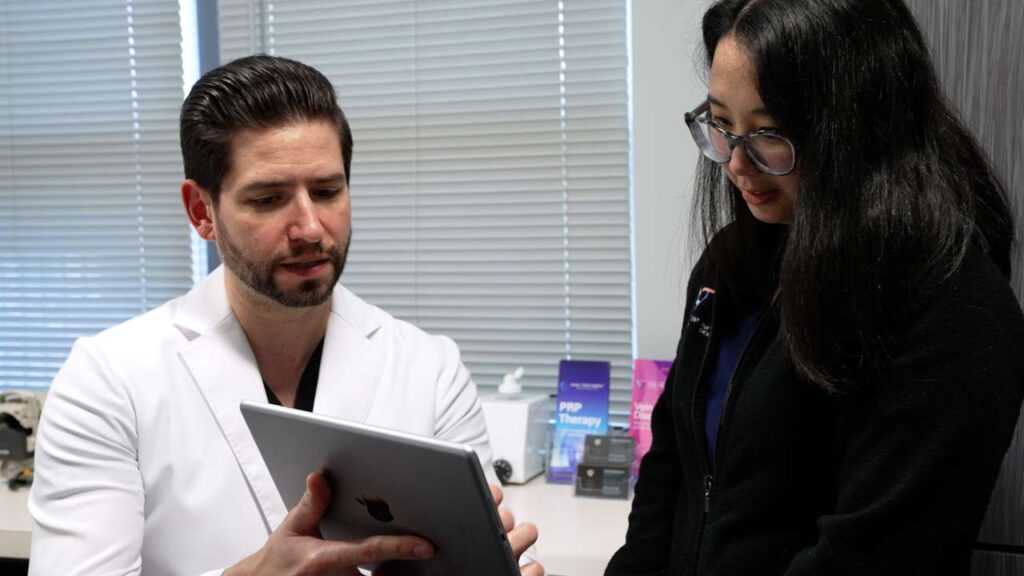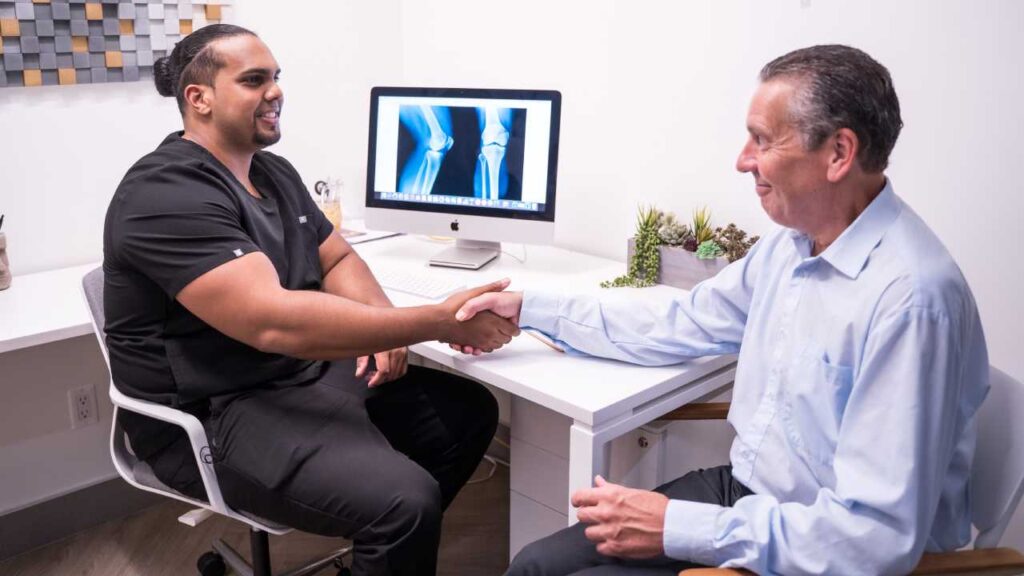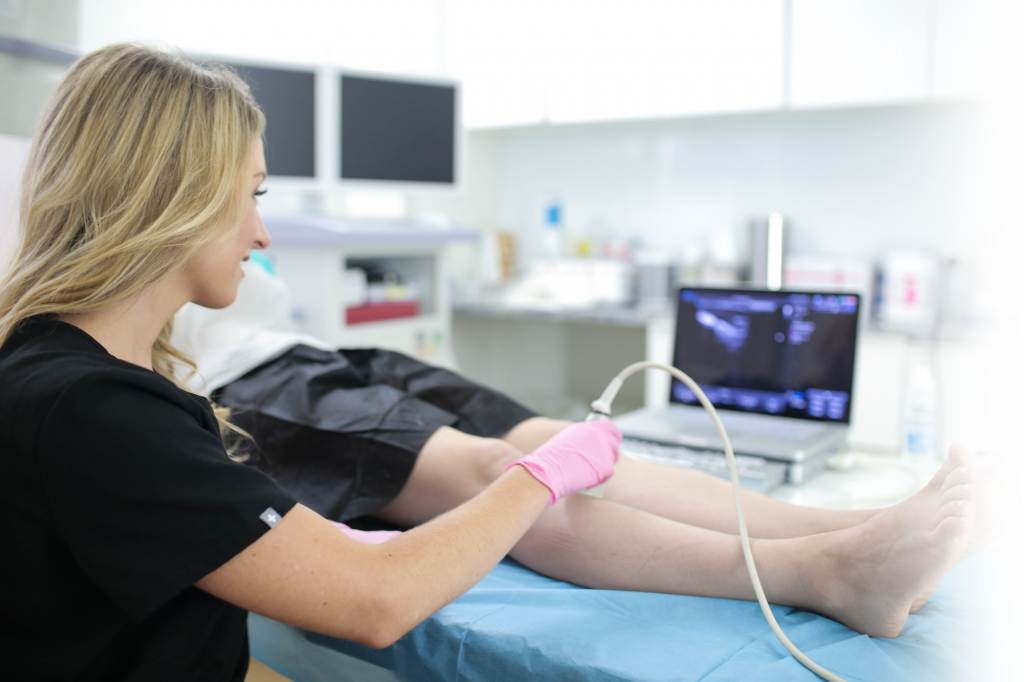Step 1: Free Insurance Verification
The vein clinic in Woodland Park believes your vein treatment process starts long before you actually enter the vein clinic. It starts the moment you request free insurance verification from the vein clinic’s website. The most reputable and reliable vein clinics should always provide free insurance verification because it gives you complete clarity about your financial costs.
When you enter your details in the designated area, an insurance concierge reaches out and asks for your information. Please provide the required information — they’ll advocate for you to improve your insurance coverage options. They’ll contact your insurance providers on your behalf to work out the terms and conditions of your coverage.
You can book an appointment after requesting free insurance verification. On the designated date and time, you drive over to the vein clinic at 1167 McBride Ave Suite 2, Woodland Park, NJ. If this location isn’t convenient, you can also visit the vein clinic’s other locations in Clifton or Paramus, NJ. For more information, please call the vein clinic at +1 973-381-2115.
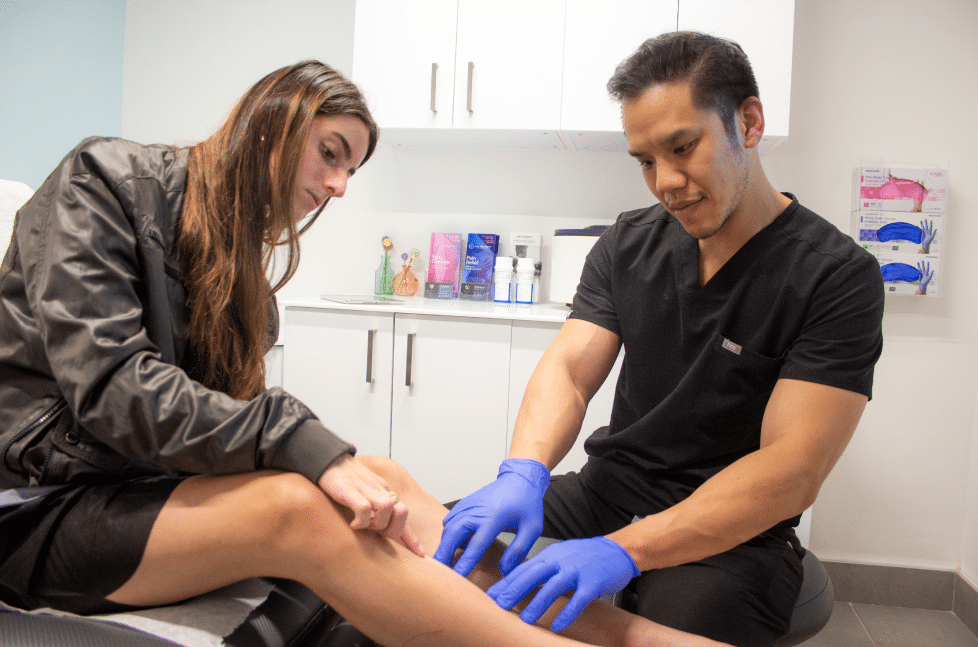
Step 2: Initial Consultation & Examination
During your initial consultation, you’ll have to fill out a form at the reception. You’ll be asked some standard questions about your medical history and symptoms, targeted to provide the vein doctor all the information necessary to make an accurate assessment. After filling out the form, you’ll be introduced to your vein doctor. The vein clinic in Woodland Park is led by Dr. Todd Kobrinski, one of the country’s leading vein experts.
You can expect the following during your consultation with the vein doctor:
- Physical Examination: The vein doctor will examine your leg veins to identify the spider veins and varicose veins. They’ll also look for skin discoloration, leg ulcers, and other symptoms.
- Discussion of Symptoms: The vein doctor will ask if you experience the symptoms of vein disease, such as leg heaviness, restless leg syndrome, frequent leg cramps, and leg pain.
- Discussion of Medical History: The vein doctor will ask about your medical history because it will reveal your propensity for vascular problems. A history of deep vein thrombosis increases the risk of chronic venous insufficiency.
Step 3: Vascular Imaging & Diagnosis
After the initial consultation, the vein doctor will confirm and diagnose chronic venous insufficiency. This is a circulatory disorder wherein your vein valves malfunction or collapse, leading to backward blood flow and the accumulation of blood in leg veins. The continued accumulation of blood in leg veins is responsible for most vein problems, including spider veins and varicose veins.
The vein doctor will perform duplex ultrasound scans to visualize the direction of blood flow in your leg veins. This is one of the most advanced vascular imaging tests used to visualize and identify chronic venous insufficiency, and it will allow the vein doctor to make an accurate assessment. You should avoid vein clinics that jump straight to the treatment without conducting an ultrasound scan.
Step 4: Vein Treatment Planning
The vein doctor will curate a personalized vein treatment plan for you. Spider veins and varicose veins can be treated using numerous methods and treatments — the vein doctor will select the ideal vein treatment for you. They’ll base their decision on numerous factors, including the diagnosis, symptoms, medical history, risk of allergic reactions, insurance coverage options, budget, and more.
Besides curating a personalized vein treatment plan, the vein doctor will also walk you through the entire treatment process. They’ll describe all of your vein treatment options, including their advantages, disadvantages, cost, insurance coverage options, and more. Basically, the vein doctor will give you all the information necessary to make an informed decision.
Step 5: Primary Vein Treatment
The goal of the primary vein treatment is to destroy or neutralize the diseased saphenous vein responsible for your vein problems. Destroying the diseased vein allows the accumulated blood to reroute into healthier leg veins, restoring effective blood circulation to the heart. If the vein doctor treats spider veins and varicose veins without addressing the root cause, they’ll simply return later.
The vein clinic in Woodland Park, NJ, offers the following minimally invasive vein treatments:
- Radiofrequency Ablation: The vein doctor makes a small incision on the skin’s surface to insert a catheter into the diseased saphenous vein responsible for your vein problems. The catheter generates thermal energy to destroy the vein.
- Endovenous Laser Ablation: The vein doctor makes a small incision on the skin’s surface to insert a laser fiber into the affected vein responsible for your vein problems. The laser fiber generates laser energy to neutralize the diseased vein.
- VenaSeal: The vein doctor injects an FDA-approved and medical-grade vein glue into the diseased vein under ultrasound guidance. The vein glue seals the diseased vein’s walls, turning it into a hardened tissue eventually absorbed by the body.
Step 6: Cosmetic Vein Treatment
If you don’t have venous insufficiency or after the primary vein treatment, the vein doctor will consider your cosmetic options. The goal of the cosmetic vein treatment is to remove the visible spider veins and varicose veins from your skin’s surface, thereby restoring your leg’s beauty and your confidence.
Sclerotherapy and ambulatory phlebectomy are the best minimally invasive procedures for spider veins and varicose veins.
- Sclerotherapy: The vein doctor injects a medicine called sclerosant into the spider veins. The sclerosant solution turns them into hardened scar tissues metabolized by the body.
- Ambulatory Phlebectomy: The vein doctor makes small incisions on the skin’s surface and extracts the superficial varicose veins.
Step 7: Recovery & Aftercare
Minimally invasive vein treatments usually conclude within 30 to 60 minutes. The vein doctor will apply pressure on your legs while you stand up, preventing blood from pooling in your leg veins. You’ll have to wear compression stockings for a few weeks to ensure smooth blood circulation. However, you can resume all of your daily activities and work immediately after the treatment.
